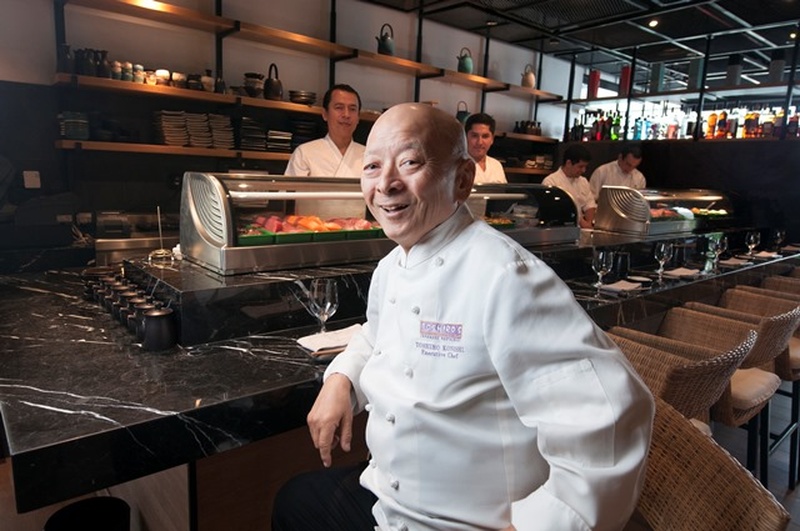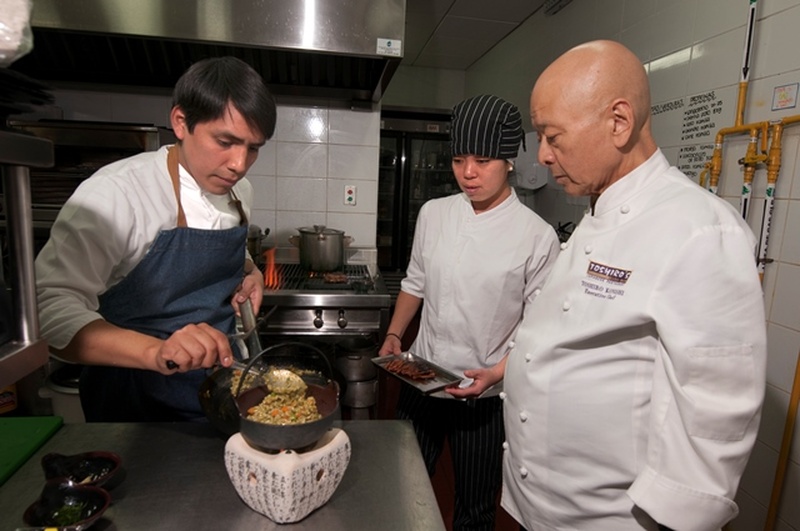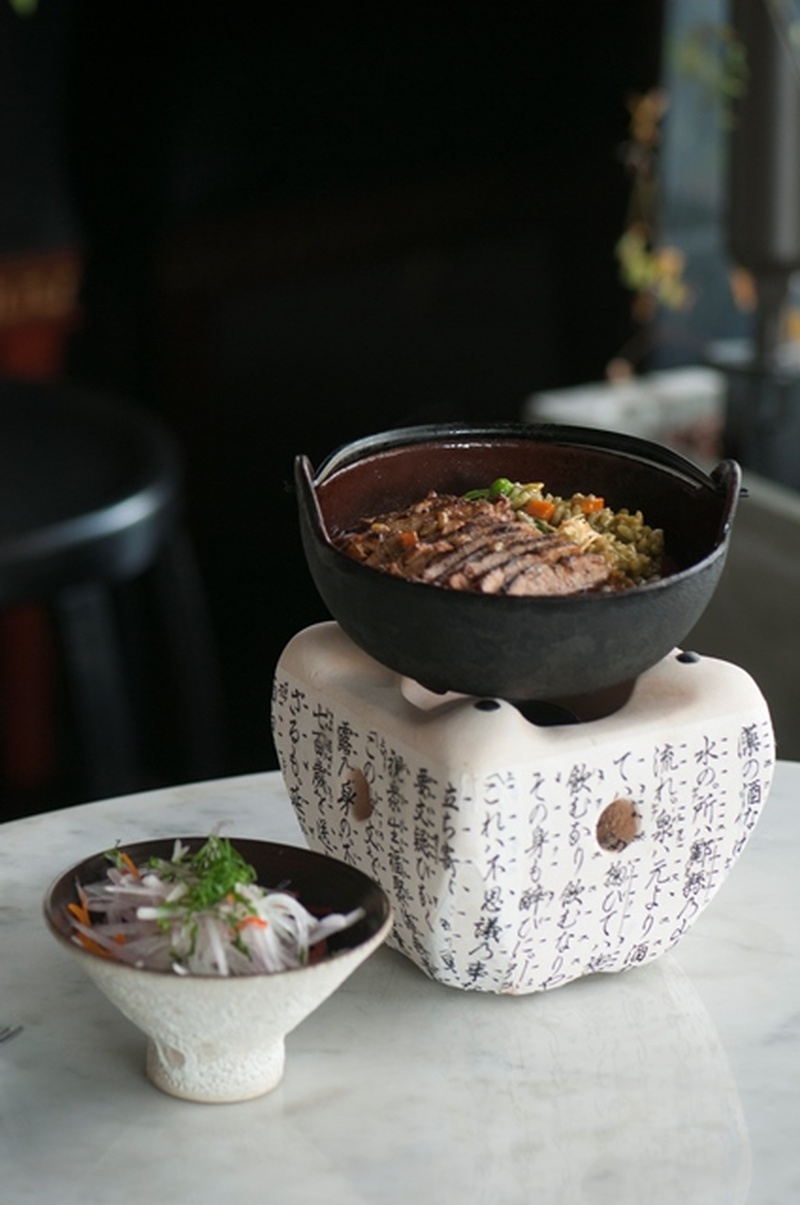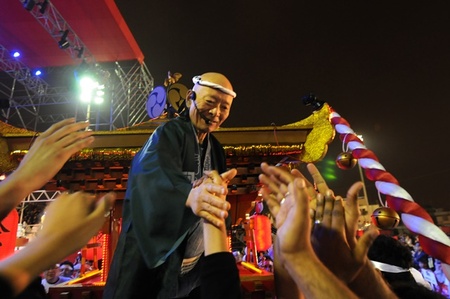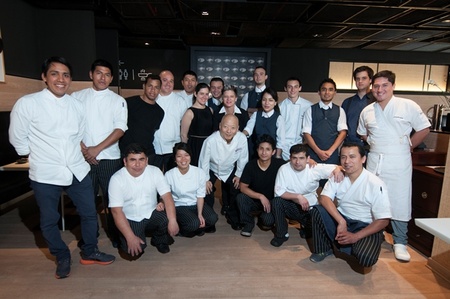Toshiro Konishi avoids labels. At his recently opened restaurant Oishii, he only prepares food that he is born to make, no matter what others call it. In any case, if a name had to be given, it would be his.
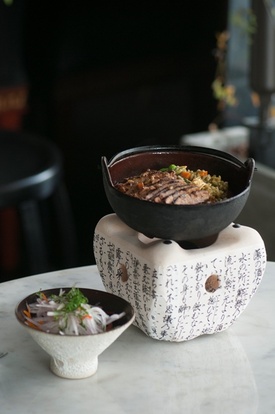
“It's not Japanese food, it's Toshiro Konishi food. The whole concept is 'my taste,'” he clarifies. Like Frank Sinatra, he might say “my way.” He uses, for example, chili, and makes rice with duck with Japanese rice.
Unlike other foods, which are heavy on fat or seasonings and make it difficult to sleep, theirs is healthy. “Look, my food, you eat eleven at night, half past eleven you sleep peacefully.”
If you ask him how much Japanese cuisine has changed in Peru since he arrived in the country 41 years ago, like a crusader with a sword at the ready he is preparing to demolish infidels who call Japanese cuisine something that is not or who believe that it is only maki. , categorically assures that nothing has changed.
Toshiro gets serious when referring to the indiscriminate use of the label “Japanese food” that is placed on everything with maki:
Japanese food, make no mistake, is about savoring raw materials, it is not sauce. But here most people are making maki. Maki is a Japanese word, but the food is not Japanese. Japanese food is very healthy because it doesn't have as much seasoning, but there is mayonnaise in the maki , and a lot of shoyu is also added. That stuff is not Japanese food. But I'm not complaining that you can't make new dishes, new restaurants, but don't tell me it's Japanese food. Rice with chicken maki , lomo saltado maki, it's already over.
Toshiro lavishes himself explaining the importance of the raw material, determined to spread a little light:
There is a pretty, tall, or flat girl, no problem. Now, what clothes do I need to improve what I see? Calata is better. Clothes are sauce, body is raw material. Example, you want to listen to Pavarotti, but the orchestra (is) twice as loud as Pavarotti, so you can't listen to Pavarotti. Pavarotti is raw material, the orchestra is salsa. Double flavor of sauce, no raw material is seen. In food, do not forget what is the main thing: raw materials.
Excess sauce spoils the natural flavor. “The fish is two millimeters thick, and the sauce is one centimeter thick. What does it taste like?” he asks. The Japanese chef says that if you ask a hundred people who eat maki what they like most, all hundred will answer “the taste of the sauce.”
“No one says 'the very delicate flavor of sole.' Sometimes there are people who don't know the taste of sole. “That makes me a little sad.”
And it's not that I have anything against sauce. He, for example, eats a hamburger with mayonnaise or mustard.
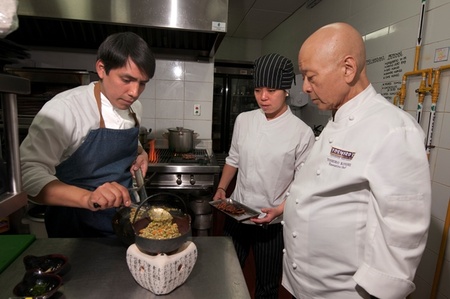
(© Photo: APJ / Óscar Chambi)
Peru is a privileged country due to the wealth of its raw materials, he says. It is not unique in this aspect, as many people believe, but it is one of the countries that can be counted on the fingers of one hand.
“Happily, the raw materials in Peru are incredible, there is plenty of them. That's why Peruvian food is famous. There is coast, there is variety. That is why Peruvians have to take advantage of the fact that there is such good raw material. Why do they mess up by mixing so much? They don't need to mix. The vegetables here are delicious, they have such good tomatoes. And fruits too, very good fruits. Fish too.”
In passing, he criticizes those who deceive with the raw material by saying that a fish is corvina when in reality it is parrotfish, for example. “That is not national gastronomy, it is business gastronomy.”
Mix is not a welcome word in your dictionary. Mixing like someone preparing a concoction is not fusion. To merge it is necessary to know the basic elements of each kitchen. He has said it before and he says it again: fusion is a consensual union; the other is “rape.”
“Marriage is two lovers. Together, very good. Although it's gringo with Asian, but it looks very good. But wanting to join forcefully, that is rape. “Nothing good ever comes out of rape.”
Although he once defined himself as “Latin Japanese,” he now resists being labeled. He lives like he cooks: at his own pace. If he wants to do something, he does it. He doesn't live thinking that he has to fit into a mold. However, later he clarifies: “I am Japanese, but with a Latin heart, a Peruvian heart.”
Toshiro is not here to stay. He planned to return to his country to continue his career as a chef, but he put down roots in Peru thanks in large part to the friends he made. “Blood is not necessary, after 20, 30 years, a friend is already family.”
GREAT NIKKEI FAMILY

Toshiro Konishi has a very close relationship with the Nikkei community, which he considers like family. He says, with pride, that for 24 consecutive years he led the mikoshi in the AELU Matsuri.
The one in 2015 was very special for him. Thousands of people cheered him. “I got excited, that's why I have to leave something behind. My philosophy of life is to leave seeds in gratitude to the Japanese colony.”
Toshiro remembers that when he arrived in Peru in 1974, without knowing Spanish, he received a lot of support from the Issei and their descendants. For him, bringing Nikkei food abroad is a sign of gratitude to the community.
For the great names of Nikkei cuisine he has nothing but words of praise. Highlights Minoru Kunigami and the Otani. “Kunigami, very good, he introduced the Peruvian to kamaboko and chawanmushi . I always bow my head before them, and also before Humberto (Sato).”
DATA
- Toshiro Konishi was born in 1953 in Miyazaki Prefecture. He belongs to a family of four generations of cooks.
- The famous chef Nobu Matsuhisa encouraged him to come to Peru in 1974. They worked together at the Matsuei restaurant.
- His wife is a sculptor and his daughter is an architect.
- He has done numerous television commercials. He became very popular in the 1980s with “Achica precio”, a phrase he used to promote a television brand.
- He also sings. He participated in the Ancón Festival in 1978 and although he did not win, he was better placed than Ricardo Montaner.
- Oishii Restaurant. Address: Armendáriz 480, Miraflores, Lima - Peru. Telephone: 4442634.
Recognition for a lifetime
In November, Toshiro Konishi received the “Japan Foreign Minister's Award” for contributing to mutual understanding between Japan and Peru in a ceremony led by the Japanese ambassador, Tatsuya Kabutan. The government of Japan recognized Toshiro's work, for more than 40 years, in promoting Japanese food not only in Peru, but also in other countries. The Japanese chef expressed his joy for the award he received and thanked all the people who have supported his career.
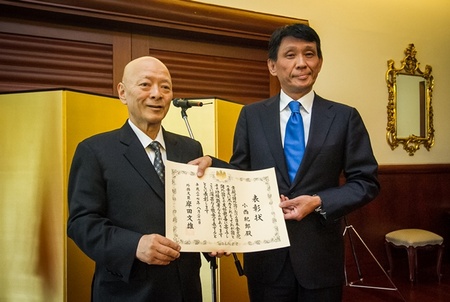
* This article is published thanks to the agreement between the Peruvian Japanese Association (APJ) and the Discover Nikkei Project. Article originally published in Kaikan magazine No. 101, and adapted for Discover Nikkei.
© 2015 Texto y fotos: Asociación Peruano Japonesa



